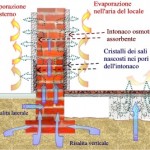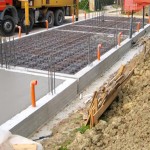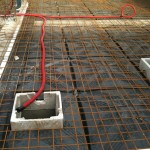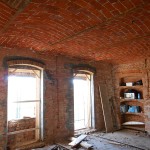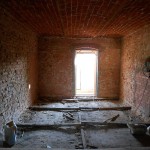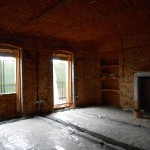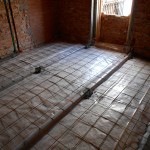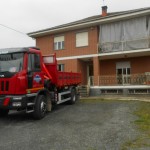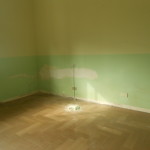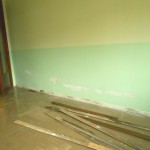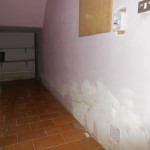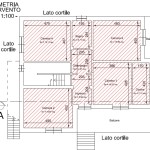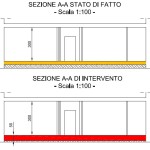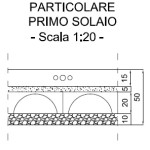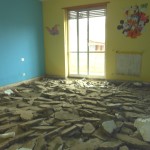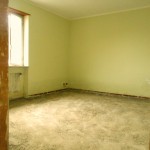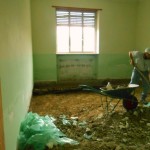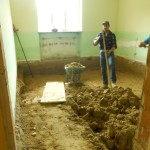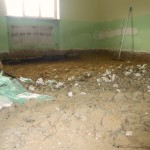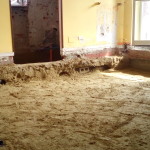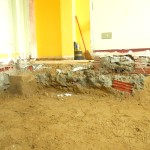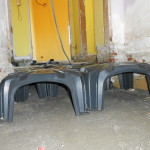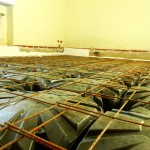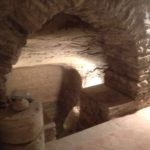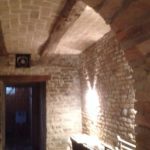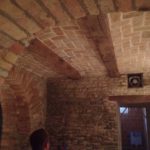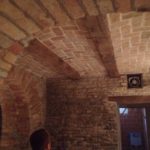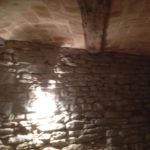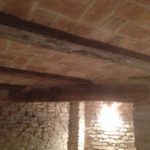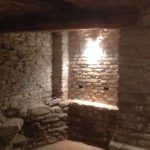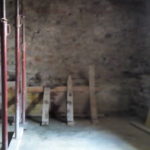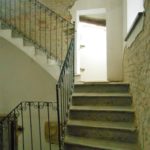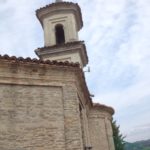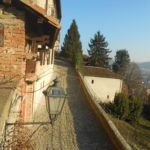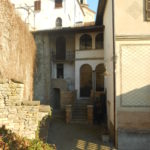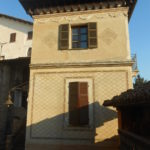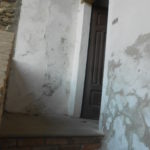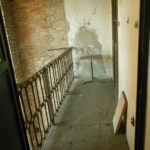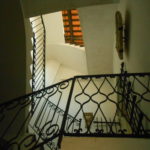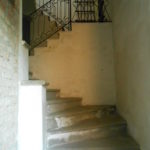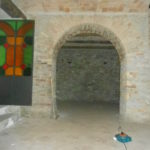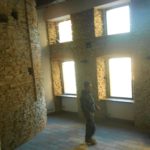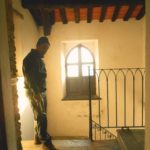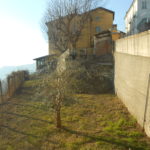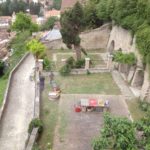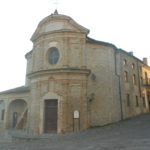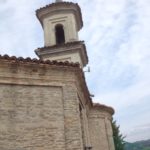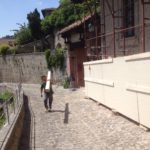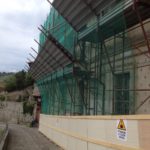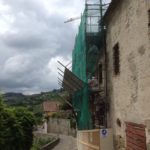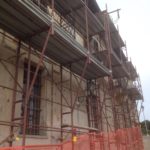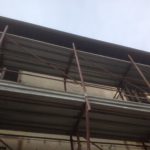Basement reconstruction underground walls
This type of evaporating-absorbing plasters are listed here only because they are very often proposed to dry-cure air and walls even inside a room and even in the presence of a lift. That is, to pretend to solve everything in one fell swoop.
It is evident that, when used in rooms, these plasters will simply transfer the soil moisture to the indoor environment, increasing it considerably and forcing it to be ventilated continuously, even in winter.
If aeration there must be, what use is the expensive dehumidifying plaster?
Despite this, they are also easily proposed to restore damp basements!
They can keep a wall dry and prevent moisture from rising within it only through such an exasperation of the amount of water evaporated from the wall to be exceeded in volume that of the rising one – naturally including salts!
An example of intervention from the point of view of a structure subject to an innovation from the ground below, is considered by the following images. They describe accurately and accurately in the reconstruction of the first one of a residential building, with the creation of ventilated crawl space by means of an igloo.
- House subject to intervention
- Before the work
- Before the work
- Before the work
A technical feasibility study was carried out on the most appropriate technology and stratigraphy for the case.
- Demolition plant
- Buildings plan
- Comparing Sections
- Final stratigraphy
The floors, the foundations and the slabs were demolished without damaging the perimeter structures. The earth was excavated until reaching a depth of -50 cm. Then the 20 cm igloos were positioned, above which a 5 cm screed with an electrically welded mesh was made.
- Floor demolition
- Floor removed
- Excavation start
- Excavation
- Excavation debris
- Excavation
- Detail of the excavation
- Igloo
- Laying steel mesh
The intervention is currently under way and involves the construction of a screed for implant holders and the laying of the final flooring.
Sub-buildings and restoration of stone walls
The underpinning is the most ancient method of interventions on foundations. It is basically a matter of reinforcing the bottom structure by extending it to reach substantial layers of ground and at the same time increasing the contact area at the base in order to reduce the unit load.
The process consists in the realization of wells of variable dimensions that allow the reinforcement and the casting of sub-mats, through partial excavation works, carried out with an operating machine or manually, subsequent leveling and support of the supporting structures (fir beams) for the construction of a structural quadrilateral.
The excavation is carried out in the center of the quadrilateral with natural slopes reaching up to the supporting structure to which we will lean with that of submission.
The shoring then with iron posts inside the environments object of intervention accentuates the degree of security found.
In this way it is possible to proceed with the building renovation of the rooms with exposed brick vaults interspersed with rough wooden beams.
In this context are inserted stone walls with irregular blocks and brick walls laid head and knife horizontally.
Construction site in Canelli:
The walls with stone blocks, sometimes interspersed with bricks, were recovered with careful and meticulous cleaning, eliminating the dust, the stone residues that were falling and closing the cracks.
The same modus operandi has been used for flooring: the mortar is used to standardize the passage but without removing visual dignity to the stone artefact.
The stone continues to be a characterizing subject of the work in the floors and walls.
RESTRUCTURING DIMORA DEL PRIORE (Canelli)
purchased by a private client for the construction of a hostel for mainly foreign customers.
- Access road
- The residence of the Prior
- Detail of the residence of the Prior
1647? – 1647? (whole construction)
Attestation of the presence in the territory of the Oratory of the Disciplinati di S. Rocco: the factory has been recently built at the expense of the community and with alms; It is in good condition and is celebrated.
(source: A.S.C.V., pastoral visits of Broglia, 23 September 1647.)
1662 – 1662 (full description)
It is in this place erected the Confraternity under the title and under the rule of San Carlo, the Confreres, of which they dress a white amice, proceed processionally on the established days, recite the office of the Blessed Virgin Mary every festive day, observe the decrees Synodal and the decrees of the provincial councils, renew the officers every year and at the end of the mandate once a year give the report of their administration to the parish priest.
The altar is decorous, provided with the necessary with the portable (consecrated stone), which however must be covered with a waxed cloth tablecloth; recite the office of the dead on the first Sunday of each month.
(source: A.S.C.V., pastoral visits Roero, 17 November 1662.)
1750 – 1828 (full extension)
In the pastoral visit of 1750, Felissano Bishop of Asti, following the increase of the confreres, has the expansion of the factory and the displacement of the altar according to the new requirements of space. In the report of the State of Churches of 18 September 1828, these works would be made by describing the building with a simple but regular internal structure with a high altar to the east and to the west.
1883 – 1900 (full description)
The church is rectangular in shape of fired bricks; the walls are well sheltered without paints; the floor is healthy but irregular; the roof is pitched with wooden structure tiles. There are six windows with glazing in good condition; the presbytery is raised from the floor of the church by two steps; there is a single scagliola altar with a common structure, with a crucifix cross and candlesticks; it has the rectangular scagliola tabernacle marbled outside on whose little door the resurrection of N. S. G.C. ; there is a pulpit conveniently placed with a cross and a crucifix; there is the semicircular chorus; the altar is surrounded by a wooden balustrade about a meter from the predella.
The bell tower, devoid of clock, has only one bell well placed blessed in the year 1818. There is the sacristy with a healthy floor with only one window.
(source: A.S.C.V., Reports of the Parish Priests, September 4, 1883 and May 21, 1900.)
- External
- External
- External
- The church
- The church
1929 – 1929 (full description)
The static and maintenance conditions of the church are satisfactory. Maintenance is carried out with the funds of the Confraternity and with the participation of the population. The primary purpose of the Confraternity is religious worship and the intervention of the Brothers in processions and burials.
It is erected separate from the parish church: it rises in the center of the country. This Confraternity has a statue of S. Rocco with relic; externally, in the niches, the statues of San Pietro and San Giuseppe.
(source A.S.C.V., Faldone No. 36, Questionnaire of 10 June 1929.)
2011 – 2011 (full devolution)
The Confraternity of S. Rocco, with headquarters in Celle Enomondo (AT), is extinguished by Decree of the Minister of the Interior on 4 April 2011, published in the Official Gazette no. 107 of 10 May 2011, with consequent notification of the recognition of civil extinction. The assets of the Confraternity are donated to the Parish of St. Anthony the Abbot in Celle Enomondo.
- Construction of the scaffolding
- Scaffolding pursuant to Legislative Decree No. 81/08
- Mantuan detail
- Scaffolding and temporary works
- Detail of the scaffolding
- Safety deck

